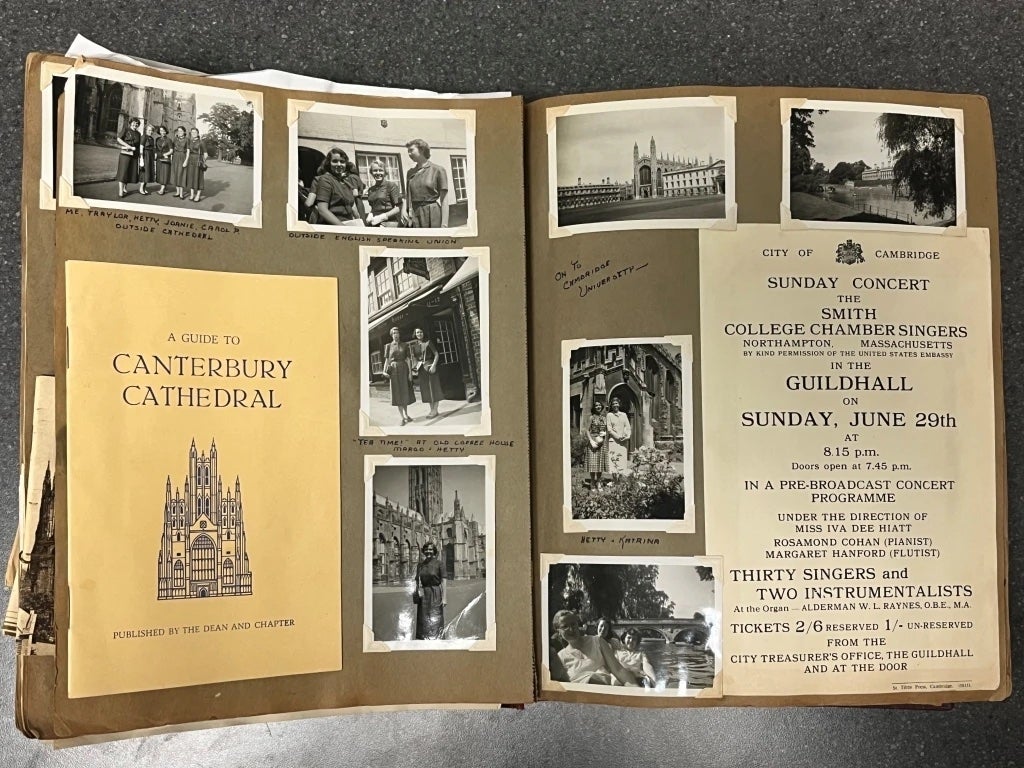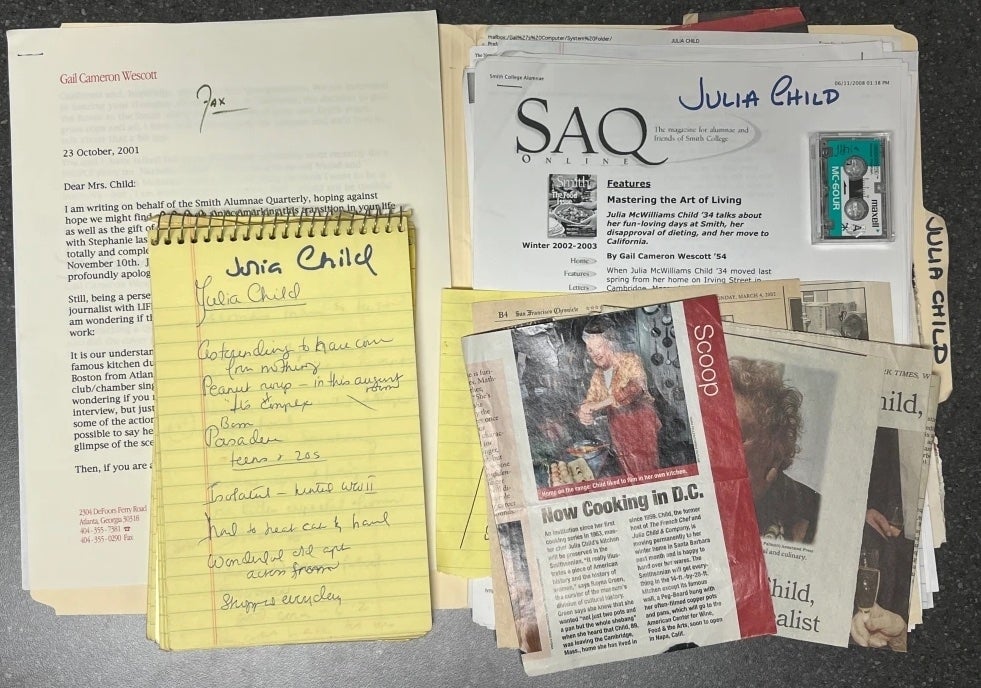The Many Stories of Magazinist Gail Cameron Wescott
Processing Archivist Andrew Williams provides a glimpse into the newest acquisition by the Annenberg School for Communication Library Archives — the papers of writer Gail Cameron Wescott.

Gail Cameron Wescott (right) pictured flying from Hyannis Port with Jackie Kennedy during the 1960 Kennedy presidential campaign. (Photo: Alfred Eisenstaedt)
Among the chief pleasures of working in archives are the stories embedded within each collection. Archival collections—amalgamations of manuscripts, printed records, photographs, media, and other forms of records—are windows into the worlds of their creators, and they not only reflect their work and achievements but also their values and the memories of the time and places in which they lived.
In early 2024, the Annenberg School for Communication Library Archives had the privilege of acquiring the papers of Gail Cameron Wescott, a journalist who wrote for several popular magazines, including Life, People, and Reader’s Digest.
The records from Wescott’s work with Life Magazine and other mid-century publications demonstrate the process in which she produced her stories and include correspondence with her interviewees, notes, and cassette tapes of interviews.
In addition to her writings and research, the collection is also made up of materials from her early life in Scarsdale, New York, and her time at Smith College.
Born on September 13, 1932, in Scarsdale, New York, Wescott graduated from Scarsdale High School and attended Smith College. She sang with the Smith College Chamber Singers, and, during the group’s European tour, was inspired to pursue a career in journalism.
After graduating in 1954, the articles she’d written for college publications earned her an entry-level position on the clip desk at Life Magazine.

Wescott soon became one of the first women bylined writers for Life. She reported on various celebrities, including the Beatles and the Kennedy family. She was part of a team of reporters who followed John F. Kennedy’s presidential race and covered the family through the president’s assassination.
After Life, Wescott published a best-selling biography of Rose Kennedy, "Rose: A Biography of Rose Fitzgerald Kennedy," and wrote for Ladies’ Home Journal and McCall’s.
By the early 1990s, Wescott was the southeastern correspondent for People Magazine and wrote stories about influential people and current events, covering Julia Roberts, Tammy Faye Bakker, and the 1996 Summer Olympics.
Wescott ended her career writing for Reader’s Digest. In retirement, she spoke about her experiences as a journalist at various speaking engagements and remained active with the Smith Alumnae Association.
Wescott was a self-described “magazinist” and firmly believed in the power and service of journalism, saying in an interview with Smith Alumnae that “reporters are the eyewitnesses for the public.”
Her interviews with Julia Child, also a Smith alum, were especially memorable for Wescott, and the two women bonded over the shared trajectories of their lives.
Like Child, Wescott eschewed the career expectations established for women in the 1950s and 60s. As she notes in the introduction to her unfinished memoir, “We were not meant to have our own futures; we were meant to marry them.”

The records from Wescott’s work provide a woman’s perspective into the news industry at a time when it was dominated by men. These records are of interest to historians of women’s history and the history of twentieth-century American society and culture more broadly.
The Gail Cameron Wescott papers are being processed and are not currently open for research. Please contact Lead Archivist Samantha Dodd (samantha.dodd@asc.upenn.edu) for inquiries. Learn more about the Annenberg School for Communication Library Archives here.
This story originally appeared on the University of Pennsylvania Libraries' blog, "Unique at Penn."



